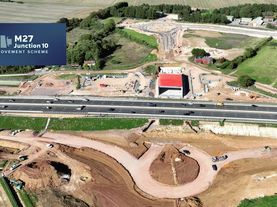The Industrial Strategy launched yesterday (23 June 2025) sets out the Government’s long-term plans for growing the UK economy, raising living standards and building resilience and security.
Plans for the UK’s 10-year Industrial Strategy were announced at the Autumn Budget in October 2024, a consultation on the Government’s Green Paper took place in November 2024. The Green Paper identified eight sectors with high-growth potential and yesterday’s launch included separate sector plans for five of these sectors, including Advanced Manufacturing.
Highlights include a pledge to cut electricity costs for approximately 7,000 energy intensive manufacturing businesses – there will be a consultation on who will be eligible. The cost reductions will come through exemptions / reductions in some of the charges and levies currently included within the energy costs. There is also a focus on reducing the wait for grid connections.
There is a promise to reduce the regulatory burden in a way that companies’ compliance costs will decrease by 25% over the course of this Parliament. A new unit in the Treasury will be created to strengthen central government oversight, challenge unnecessary regulation and help make the regulatory system focused and proportionate. More details are likely to come during the Financial Services sector plan in July 2025. Regulatory uncertainty and inconsistency are a barrier to growth, and this is something that the BVRLA included as a key part of its response to the consultation last year.
The need for certainty in the tax landscape is also something that the BVRLA has long-called. The mention within the Industrial Strategy paper of full-expensing being maintained is an acknowledgement of the role tax incentives can play in unlocking investment and growth. The association will continue to champion expanding full-expensing to leased assets.
For Small and Medium-sized Enterprises (SMEs), there will be a new Business Growth Service in summer 2025. This will include a new website to provide a single online platform through which businesses can find everything they need in one place to help them start up, scale up, sustain growth, export, invest, and access recruitment. The regulatory content on GOV.UK will also be easier to navigate, so that it provides the information that businesses need in order to understand and comply with regulations, with only the most complex cases requiring bespoke support. To support SMEs to decarbonise, the UK Business Climate Hub will provide information, advice, and signposting to private sector services.
Impacts on the automotive sector
Investment in the UK Automotive sector is included as a priority, with more details set out in the Advanced Manufacturing sector plan.
The sector plan includes the following ambitions to drive growth:
- Increase the volume of vehicles made in the UK to over 1.3 million cars and commercial vehicles by 2035.
- Cement the UK’s leadership in pioneering and strategic technologies, including zero emission vehicles (ZEVs), leveraging a minimum of £6.6 billion in private investment.
- Lead the transition to ZEVs to continue the successful reduction of CO2 emissions.
- Create the first European market for self-driving vehicles and services and maximise investment in disruptive electric vehicle technologies such as vehicle-to-grid, AI, and software. As well as application of dual-use technologies to support the defence sector.
The sector plan introduced the DRIVE35 initiative: ‘Driving Research and Investment in Vehicle Electrification’ to support zero-emission vehicle manufacturing and unlock investment across all aspects of automotive electrification, including cutting-edge developments in vehicle-to-grid technology and software-defined vehicles. The Government has committed £2 billion of automotive capital and research and development (R&D) funding to 2030, plus an additional boost of £500 million to extend the R&D support under DRIVE35.
There is a commitment to deploy at least £5.8 billion to five key areas: gigafactories and the electric vehicle supply chain, green hydrogen, carbon capture, ports, and green steel.
As announced in the recent Spending Review, £400 million has been allocated to support the roll-out of charging infrastructure across the country, including to facilitate the deployment of zero emission vans and HGVs and £1.4 billion to support the continued take-up of electric vehicles, including vans and HGVs.
The BVRLA is encouraged to see that the Government will continue to provide generous capital allowances and benefit-in-kind (BiK) tax incentives. The association will continue its efforts on using BiK rates to increase access to used BEVs.
To address the complexities in commercialising automated vehicles, including self-driving cars, the Government will increase funding to the Connected and Automated Mobility (CAM) Pathfinder programme with a further £150 million extending it until 2030, provided in partnership with Zenzic and Innovate UK.
From February 2027, all electric vehicle batteries and industrial batteries over 2 kWh sold into the EU market will require a unique Battery Passport. By the start of 2031, those batteries must meet recycled content targets for lithium, nickel, cobalt, and lead. This will be used to establish a competitive advantage in recycling, data, and systems management, as well as encourage best practice in end-of-life management. There are proposals for a Circular Economy Strategy for England, expected in Autumn 2025.
The Government also plans to work with industry and Ofgem on Battery energy storage systems (BESS) on the basis that this presents a significant economic opportunity and will play a pivotal role in the transition to a clean power system.
Next Steps
The Industrial Strategy is a broad ranging, long term plan aimed at increasing the ease, speed and long-term stability for doing business in the UK. Scaling net zero transport through battery innovation and electric vehicle manufacturing is identified as a growth opportunity.
There are promises of support for ZEVs through funding for charging infrastructure (£400m), funding for increasing uptake of ZEVs (£1.4bn), as well as the retention of generous capital allowances and Benefit-in-Kind rates.
In the wider automotive sector, the Government is supporting ZEV manufacturing through reduced electricity costs, R&D funding for vehicle-to-grid technology, capital funding for gigafactories and the EV supply chain, funding for Connected and Automated vehicles as well as exploring battery-related growth opportunities.
The reduction in regulatory costs, lower electricity costs and faster grid connections are all promising ambitions. How effectively these ambitions are realised, remains to be seen. There will be an annual Investment Strategy update, which will assess the impacts based on six core metrics: business investment, Gross Value Added, productivity growth, trade exports, labour market outcomes such as employment and wages, and the number of new, large, ‘homegrown’ businesses.
If members would like to share their own reactions to the Industrial Strategy, contact [email protected]
Read the views of BVRLA Chief Executive: Government signals long-term intent for UK Automotive
A copy of the Strategy: The UK's Modern Industrial Strategy
Policy papers, sector plans and supporting documents: The UK's Modern Industrial Strategy 2025 | GOV.UK




